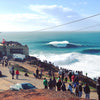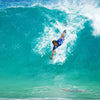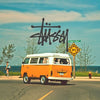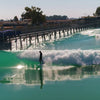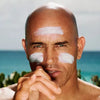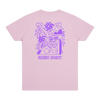Surfing Terms Explained: Talk Like a True Wave Rider
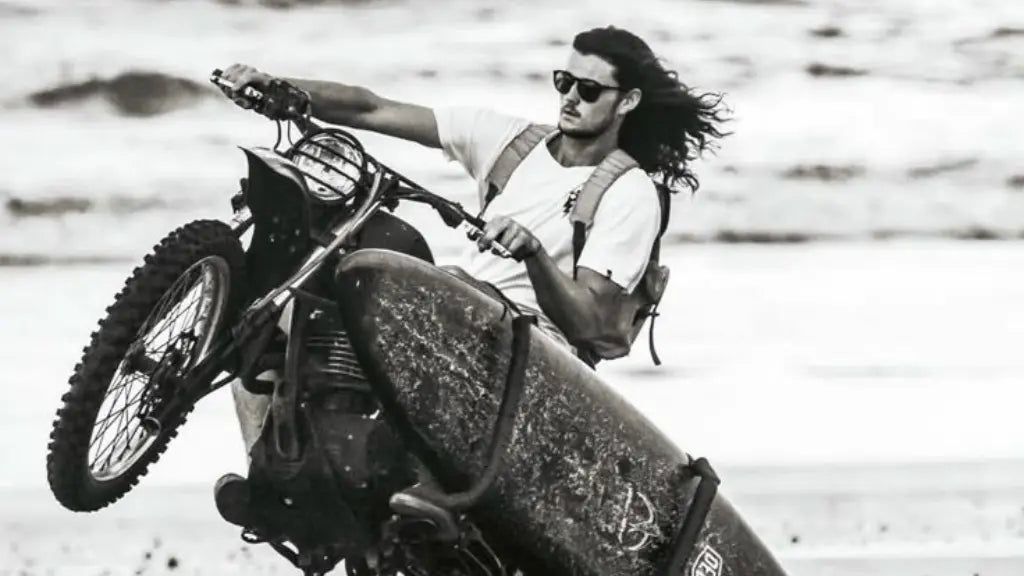
Talk the Talk Before You Walk the Walk
If you’re just getting into surfing or you’ve been paddling out for a while but still feel lost when someone says “Dude, that wave was firing and I got so pitted!” don’t worry, we’ve all been there. Surf culture has its own rich language, filled with unique surfing terms and laid-back surfing slang that might sound like a foreign language at first.
Learning the lingo doesn’t just help you sound like a local it helps you understand what’s going on out in the lineup, connect with other surfers, and embrace the full stoke of the surfing lifestyle. Whether you're trying to decode wave descriptions, understand board types, or just wanna know what “frothing” really means, this guide's got your back.
What Are Surfing Terms and Surfing Slang?
Surfing terms are the core vocabulary used to describe the ocean, waves, surfboards, and techniques. You’ll hear words like barrel, lineup, and cutback tossed around in any surf convo. On the flip side, surfing slang is more about the culture the chill, often hilarious language that surfers use in and out of the water. Think phrases like stoked, kook, dawn patrol, or yewww!
Together, these words form the heartbeat of surf culture. In this guide, we’re gonna break them all down by category, so you can talk the talk and paddle out with confidence.

1- Wave & Ocean Terminology
A-frame
A wave that peaks in the middle and breaks both left and right, forming an “A” shape. Perfect for both goofy and regular-footed surfers.
Backwash
When waves rebound off the shore or a jetty and push back out to sea, sometimes colliding with incoming waves and causing bumpy conditions.
Barrel
The hollow part of a wave that forms when it curls over. Riding inside the barrel is the ultimate surfing experience also known as getting “shacked” or “pitted.”
Bathymetry
The underwater topography or shape of the seafloor. It affects how waves break, especially near reefs, sandbars, or points.
Beach break
Waves that break over a sandy bottom. These can shift often depending on tides and swell, making conditions changeable.
Bombora (or Bommie)
An offshore reef or submerged rock shelf where waves break, often producing heavy and powerful surf.
Chop
Small, messy waves or surface texture caused by wind or conflicting currents. Not ideal for smooth rides.
Cleanup set
A larger-than-average set of waves that "cleans out" the lineup by catching surfers off guard and washing everyone toward shore.
Closeout
A wave that breaks all at once, leaving no open face to ride. A common frustration for surfers trying to get a good line.
Corduroy
A visual term for long, evenly spaced lines of swell approaching the shore, like corduroy fabric. A good sign of consistent waves.
Crest
The highest point of a wave, just before it breaks.
Fetch
The distance over which wind blows across the surface of the water to generate swell. Longer fetch = bigger waves.
Flats
The flat water in front of a breaking wave or between sets. Also used to describe conditions when there are no waves.
Foam
The bubbly, white part of a broken wave. Beginners often ride in the foam zone to learn the basics.
Green room
Slang for the inside of a barrel. Getting in the green room means you're deep in the tube pure bliss!
Groundswell
A swell created by distant storms, resulting in clean, powerful, and well-organized waves.
Impact zone
The area where waves consistently break. It’s where you take the hits if you’re caught inside.
Inside
Closer to the shore, where waves are already breaking or reforming. Also used to describe someone’s position relative to the peak.
Lull
A period of calm between sets where no rideable waves come through. Great for catching your breath.
Mack (or Macking)
Used to describe giant, powerful waves. “It’s macking out there today!”
Mysto spot
A mysterious or secret surf spot, often offshore or only breaking under rare conditions.
Offshore wind
Wind that blows from land toward the ocean, holding the waves up and creating clean, well-shaped faces.
Onshore wind
Wind blowing from the ocean toward the shore. It crumbles the wave face, making conditions choppy and less ideal.
Out the back
Beyond the lineup where waves begin to form. Often where bigger sets break.
Outside
Further out to sea than the main lineup. Bigger, earlier-breaking waves often hit here.
Over the falls
Getting thrown off your board and sucked over the lip of the wave. It’s a full-body slam, bro hold onto your leash!
Pit
Another term for the barrel. “That wave had a sick pit!”
Reflection
When waves bounce back off cliffs, jetties, or sea walls, often creating interference with incoming waves.
Refraction
When waves bend around obstacles or shallows, changing direction and focusing energy can create ideal surf conditions.
Rip
Short for rip current a strong, narrow current moving away from the shore. Dangerous if you panic, but manageable if you know how to escape.
Rip current
A fast-moving channel of water flowing out to sea, usually perpendicular to the shore. Use it to paddle out, but never fight it if caught in one.
Rogue wave
A freakishly large and unexpected wave, often appearing alone. Not common, but when they hit it’s wild.
Section
A part of the wave face. Surfers often ride multiple sections on one wave, linking maneuvers between them.
Set
A group of waves arriving in a series. Sets usually contain the biggest and most rideable waves.
Shoaling
When waves slow down and grow taller as they move into shallower water. This is how waves start to break.
Shoulder
The unbroken, sloping part of a wave next to the peak. Great for turns and maneuvers.
Shore break
Waves that break directly on the shore. Can be fun or brutal depending on size.
Soup
Another word for whitewater. The foamy aftermath of a broken wave.
Surging wave
A wave that doesn’t break but instead rushes up the beach. Common on steep shores.
Swell
The energy traveling across the ocean that eventually forms breaking waves. Swells are the lifeblood of surfing.
Tidal bore
A rare natural phenomenon where a wave travels up a river or inlet due to incoming tide.
Trough
The lowest point between two waves.
Tsunami
A massive wave caused by an underwater earthquake or landslide. Not surfable seriously dangerous.
Tube
The hollow cylinder formed when a wave breaks and curls. The holy grail of surfing.
Wave height
The vertical distance from the wave’s trough to its crest.
Wave period
The time between two consecutive waves in a set. Longer period usually means better quality surf.
Wave train
A group of waves traveling together across the ocean.
Wavelength
The horizontal distance between two wave crests.
Wedge
A wave that forms at an angle due to wave reflection, creating a steep, punchy peak. “That wedge was nuts!”
Whitewater
The foamy white part of a broken wave. Often where beginners start their surf journey.
Whitewash
Similar to whitewater refers to the turbulent foam created after a wave breaks.
Shoulder hopper
A surfer who avoids the steep peak and always stays on the shoulder. Not a term of praise, bro.
Inside section
The final part of a wave near shore. Can be tricky or dumpy but offers a last hit before the ride ends.

2- Surfboard & Equipment
Alaia
An ancient Hawaiian wooden surfboard finless, thin, and super challenging to ride. Pure old-school style.
Bellyboard
A small board designed to ride waves lying down on your belly. It’s like bodyboarding, but often with a wooden board.
Blank
A raw, unshaped piece of foam (or wood) that’s used to make a surfboard. Shapers turn blanks into custom sticks.
Deck
The top side of a surfboard where a surfer stands. Can be waxed or gripped for traction.
Ding
Any damage or crack on a surfboard. Dings need to be fixed to avoid water seeping into the foam core.
Epoxy
A type of surfboard construction using epoxy resin. It makes boards lighter, more durable, and more buoyant than traditional fiberglass.
Fin
Attached underneath the board, fins help with stability, direction, and control. Different setups = different styles.
Flippers
Used by bodysurfers or bodyboarders for propulsion in the water. Not used when surfing on a regular board.
Foam blank
A block of foam (usually polyurethane or EPS) used to shape surfboards.
Foam board (Soft top)
A soft, foam-covered surfboard. Super beginner-friendly and forgiving if it hits you less painful wipeouts.
Funboard
A mid-length board that blends the maneuverability of a shortboard with the stability of a longboard. Great for progressing surfers.
Gun
A long, narrow surfboard designed for big wave surfing. Made to paddle fast and hold steady on massive drops.
Hard top
A traditional surfboard with a hard fiberglass or epoxy shell used by more advanced surfers.
Kneeboarding
A surfing style where the rider stays on their knees instead of standing. Not super common, but still around.
Leash (Leg rope)
A cord that connects your ankle to your surfboard, so you don’t lose it after a wipeout. Essential for safety.
Leg rope
Another term for a leash. In Aussie and surf slang, they're basically interchangeable.
Line-up
Where surfers wait for waves just beyond the breaking zone. It’s where the action and etiquette come into play.
Log
Slang for a longboard, especially one that’s heavy and classic in shape.
Longboard
A board typically 9 feet or longer. Great for smooth rides, nose riding, and mellow turns.
Neoprene
The rubbery material used to make wetsuits. It keeps you warm by trapping a thin layer of water close to your body.
Outline
The overall shape of a surfboard when viewed from above. Helps determine how the board rides.
Polyurethane
A type of foam used in traditional surfboards. Combined with fiberglass and resin to make the shell.
PWC (Personal Watercraft)
Used in tow-in surfing to pull surfers into massive waves where paddling isn’t an option. Think Jet Skis with a mission.
Quiver
A surfer’s collection of boards for different conditions. From small wave grovelers to big wave guns.
Rail
The edges of the surfboard. Their shape affects how the board turns and handles in the water.
Rashguard
A tight-fitting shirt worn to protect from sunburn and board rash. Sometimes worn under wetsuits.
Rocker
The curve of a surfboard from nose to tail. More rocker = better in steep waves. Less = faster on flatter waves.
Shaper
The craftsperson who designs and builds surfboards total artists with foam and resin.
Shortboard
A high-performance surfboard, usually under 7 feet. Built for fast turns, sharp maneuvers, and more advanced riding.
Square waves
A rare and intense ocean phenomenon where two swells collide at perpendicular angles, creating a crisscross pattern. Beautiful but super dangerous can create unpredictable currents and rough waters. Not ideal for surfing, but definitely a jaw-dropper to witness.
Skeg
Old-school term for a fin, especially single fins on vintage boards.
Slab
A wave that breaks suddenly and powerfully, often over shallow reef. Needs a specific board and mindset.
Soft top
A surfboard with a soft, foam exterior. Great for learners due to safety and float.
Stick
Slang for a surfboard. “Grab your stick and let’s paddle out!”
Stringer
A strip of wood (or carbon) running down the center of a board for strength and structure.
SUP (Stand-Up Paddleboard)
A large board designed for standing and paddling with a long paddle. Great for small waves or flat water.
Surf clothing brand
A company or label that creates apparel inspired by the surf lifestyle. Think boardshorts, wetsuits, hoodies, and beach gear. Major ones like Rip Curl, Billabong, and Roxy have shaped surf fashion globally.
Surf shop
A store (physical or online) where you can buy boards, wetsuits, wax, and surf lifestyle gear. Often the local hub for surf culture, advice, and community vibes.
Thruster
A three-fin setup, the most common fin layout on modern shortboards. Balances drive, stability, and control.
Tow-in
A style of surfing where a PWC pulls the surfer into massive waves. Allows riding waves too big to paddle into.
Twin-fin
A two-fin setup. Offers a looser, skatey feel popular in retro boards and small wave shredding.
Wax
Sticky stuff applied to a board’s deck for traction. Comes in different formulas depending on water temp.
Wetsuit
A neoprene suit that keeps you warm in cold water. Comes in different thicknesses and styles (fullsuit, spring suit, etc.).

3- Surfing Maneuvers & Techniques
Aerial
A high-performance move where the surfer launches off the wave and into the air, landing back on the wave face. Not for the faint-hearted!
Backdoor
Taking off behind the peak of a barreling wave and pulling into the tube from the opposite side. Tricky and stylish when nailed.
Backside
Riding a wave with your back facing it. For regular-footers, that’s a left; for goofy-footers, it’s a right.
Bail
To jump off or ditch your board to avoid a wipeout or a dangerous section. Sometimes better than taking the hit.
Bailing
The act of bailing. Also refers to consistently avoiding waves or tough situations. “He kept bailing on the sets.”
Bottom turn
The first and most critical turn at the base of the wave. Sets up all the other moves power and flow start here.
Carve
A smooth, arcing turn on the open face of the wave. Looks stylish and feels buttery.
Caught inside
When a surfer is stuck between the shore and the breaking waves, unable to paddle out. Total beatdown zone.
Chandelier
When the lip of a wave cascades down, blocking your view or exit while in the barrel. Can knock you out of the tube.
Charging
Going after big, heavy waves with full commitment. “She’s charging today those waves are double overhead!”
Cross step
A stylish maneuver where longboarders walk up and down the board by crossing their feet. Used to set up nose rides.
Cutback
Turning back toward the breaking part of the wave after riding out onto the shoulder. Keeps you in the power zone.
Doggy door
A small exit at the end of the barrel. Squeezing through it takes timing and skill like escaping out the side.
Drop in
Taking off on a wave that someone else already has priority for. Major breach of surf etiquette.
Drop
The vertical fall down the face of the wave after takeoff. On big waves, it’s intense and super rewarding.
Duck diving
Pushing your board under an oncoming wave while paddling out. Key skill for shortboarders.
Floater
Riding over the crumbling top section of a wave and dropping back down. Often used to bypass closeouts.
Frontside
Riding a wave with your chest facing the wave face. Usually more natural and easier for most surfers.
Hang Ten
When a longboarder walks to the nose and hangs all ten toes off the edge. Pure surf style, old-school finesse.
Kick out
Exiting a wave cleanly by riding off the back or flicking out. Helps you avoid a messy wipeout.
Noseride
Riding at the very front (nose) of the board, typically on a longboard. Includes maneuvers like Hang Five and Hang Ten.
Pearling
When the nose of the board digs into the water during takeoff often followed by a full wipeout. Common rookie mistake.
Pop-up
The quick move from lying down to standing on the board during takeoff. Core move for every surfer.
Priority
The right to catch the next wave in a lineup. Usually goes to the surfer closest to the peak. Crucial for surf etiquette.
Punt
Slang for doing an aerial maneuver kicking off the lip and flying.
Re-entry
Hitting the lip of the wave and landing back on the face. A vertical, stylish maneuver often seen in contests.
Snap
A sharp, quick turn on the wave face, usually off the top. Fast, flashy, and often done in tight sections.
Stall
Slowing down on purpose, usually to get deeper into the barrel or time a section right.
Stance
The position of your feet on the board either regular (left foot forward) or goofy (right foot forward).
Take-off
The act of catching and standing up on a wave. Every ride starts with a solid take-off.
Trimming
Adjusting your weight and board angle to maintain speed and balance on the wave. Smooth and flowy.
Tube ride
Successfully riding inside the barrel. The holy grail of surfing. If you come out clean you’re a legend.
Turtle roll
A method used by longboarders to get through breaking waves flipping the board upside down and holding on as the wave passes.

4- Surf Culture & Slang
Aggro
Short for “aggressive.” Describes a surfer who’s intense, sometimes overly competitive or angry in the lineup.
Aloha
A Hawaiian word meaning hello, goodbye, love, and respect. In surf culture, it’s a vibe and way of life.
Amped
Super excited or fired up. “I’m so amped for this swell, bro!”
Beach bum
Someone who spends all day at the beach, living the laid-back surf lifestyle. Often tanned, salty, and stoked.
Booger
Slang for a bodyboarder. Some surfers use it playfully, others a bit disrespectfully it’s all about the tone, dude.
Bro / Brah / Bruh
Surfer speak for “dude” or “friend.” The universal word in the water and beyond.
Burn
When one surfer takes off in front of another who had priority not cool. A serious offense in surf etiquette.
Dawn patrol
Heading out for a surf at sunrise. Peaceful, glassy conditions and the early bird gets the bomb wave.
Dude
Timeless surf term for anyone and everyone. “Dude” can mean bro, stranger, or even a dog.
Firing
When the waves are pumping clean, powerful, and consistent. “It’s firing out there!”
Flat
When there are no waves. Total heartbreak for surfers.
Froth
The bubbly whitewater after a wave breaks, and the excitement a surfer feels. “He’s full of froth.”
Frothing
Being overly excited or hyped about the waves. “You’re frothing, bro!”
Glassy
When the water surface is super smooth, like glass. Usually happens with no wind or light offshore wind perfect conditions.
Gnarly
Describes something intense could be epic or dangerous. “That drop was gnarly!”
Goofy foot
A surfer who rides with their right foot forward. The opposite of regular foot.
Gremmie / Grommet / Grom
A young or beginner surfer. Groms are stoked, full of energy, and often totally rip despite their size.
Hang loose
The vibe. The lifestyle. Also the shaka sign 🤙 a greeting, a goodbye, a way to say “everything’s chill.”
Haole
A Hawaiian word for a non-native, especially used for white people. Can be neutral or offensive, depending on context.
Heat
A round or session in a surf contest. Surfers compete in heats to score waves and advance.
Ho-dad
Someone who hangs out at the beach pretending to be a surfer but doesn’t actually surf. Classic poser.
Kahuna
A Hawaiian word for a priest or expert. In surf slang, “the big kahuna” means someone who rips or commands respect.
Knot
A unit for measuring wind speed. 1 knot = 1.15 mph. Important for reading swell forecasts.
Kook
A surfer who lacks skill and disrespects surf etiquette. Not just a beginner more like a clueless or inconsiderate one.
Localism
When locals act territorial about their surf spot. Sometimes includes aggressive behavior toward outsiders.
Mental
Used to describe something crazy, insane, or wild. “That wave was mental, bro!”
Mushburger
A soft, weak wave with no power. “Total mushburger today bring your log.”
Party wave
When multiple surfers ride the same wave. Sometimes fun, sometimes chaos.
Perfect 10
A flawless ride scored in competition judged as a perfect wave and execution. Doesn't get better than this.
Pitted
Deep inside the barrel. “Dude, I got so pitted!” Often said with passion, sometimes with a drawl: “sooo pitted.”
Regular foot
A surfer who rides with their left foot forward. Opposite of goofy foot.
Right of way
Surf etiquette rule: the person closest to the peak has priority. Don’t snake, don’t drop in.
Shacked
Caught deep in the barrel, sometimes completely covered. “I got shacked so hard I couldn’t see daylight.”
Shaka
The “hang loose” hand gesture 🤙 used to greet, thank, or show aloha. Wanna know more about the origin? FInd out everything in our article What does Shaka mean
Shorey
Short for “shore break.” Waves that break right on the sand can be fun or brutal.
Shred
To surf with style, power, and flow. “She was shredding those lefts.”
Sick
Slang for awesome or epic. “That air was sick!”
Skagged by the rail
Wiping out and getting whacked by your own board especially the sharp rail.
Snaking
Paddling around another surfer to steal their priority. Major bad vibes, bro.
Stoked
The universal surf feeling pure happiness, excitement, and gratitude. “I’m so stoked right now!”
Wave hog
A surfer who tries to catch every single wave without sharing. Not cool in any lineup.
Wahine
Hawaiian word for woman, often used to refer to female surfers.
Yewww
The ultimate surfer cheer. Yelled when someone catches a sick wave or sticks a gnarly move. “YEEWWW!”
Steezy
Stylish + easy. Describes someone who surfs with smooth flow and flair.
Over it
Burned out, tired, or frustrated can be with the waves, the crowd, or the conditions.
No can do
Hawaiian-English pidgin phrase meaning “not possible.” Casual, laid-back refusal.
Grind
Hawaiian slang for eating. “Let’s go grind after the sesh.”
Zoned out
Spaced out, staring at the ocean, or just deep in surf thoughts. Classic surfer headspace.
Inside man
A surfer sitting deeper than everyone else, often getting first pick of the set waves.
Surf check
The sacred ritual of driving or walking to the beach to scope out the conditions before paddling out. You’re checking the swell, wind, tides, crowd everything that might affect your sesh. It’s part meditation, part stoke evaluation.
Conclusion: Stay Stoked & Speak the Surf Lingo
Now that you’re dialed in with all the essential surfing terms and iconic surfing slang, you’re not just riding waves you’re officially part of the tribe. Whether you're talking board shapes, reading the lineup, or just tossing a casual “shaka” to a fellow shredder, understanding the lingo brings you one step closer to the heart of surf culture.
So keep this guide handy, learn the rules of the lineup, and never stop being curious. The ocean is always teaching, and so is the crew around you. Be respectful, stay humble, and above all stay stoked.
Catch you in the green room, bro 🤙

